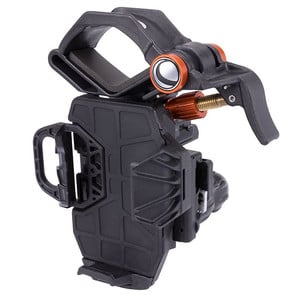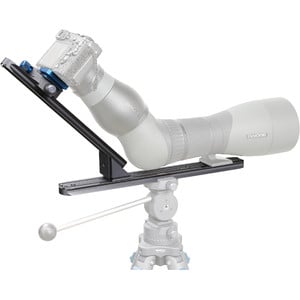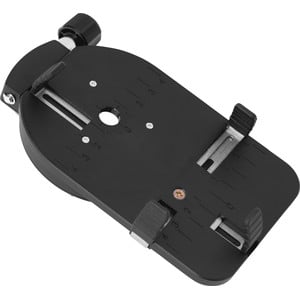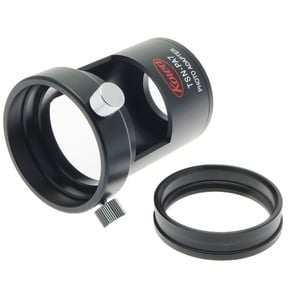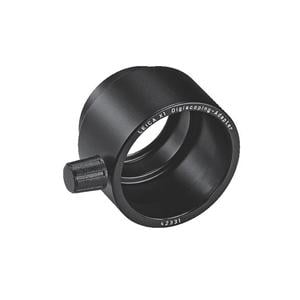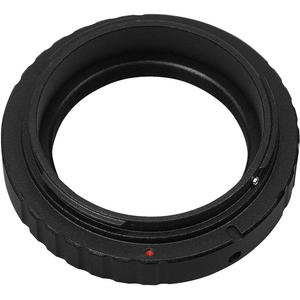Digiscoping
Digital photography through the eyepiece of a spotting scope reaches focal length ranges that even the most expensive telephoto lenses do not offer. Here's how it works.
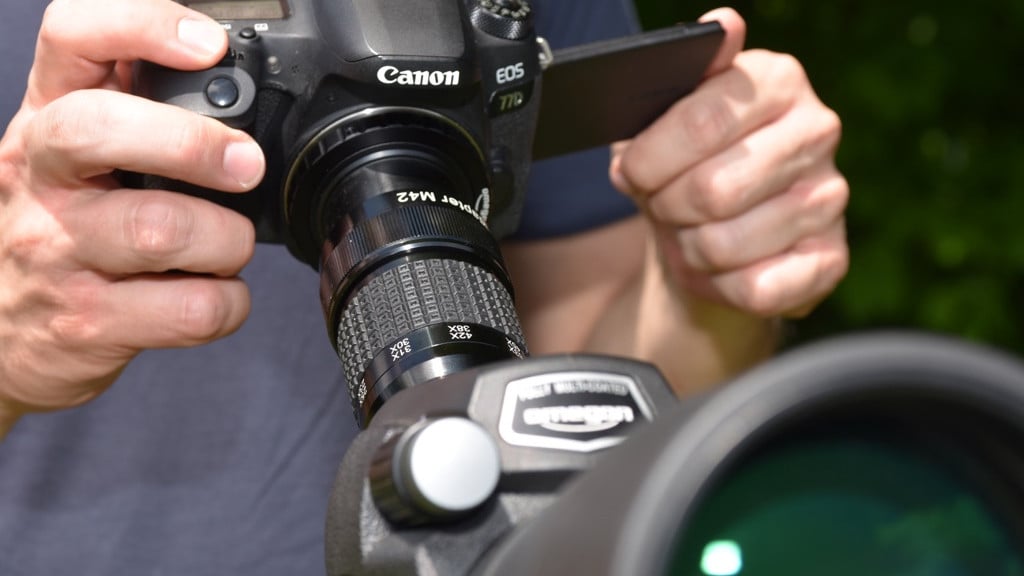
What does digiscoping mean?
Digiscoping is the term used to refer to the capture of an image through the eyepiece of a spotting scope. The exciting thing about it is that you can reach focal length ranges that even the most expensive telephoto lenses with the most expensive SLR cameras do not offer.
What should I look out for in a spotting scope?
The general rule is that the larger the aperture and the smaller the eyepiece magnification, the larger the exit pupil (aperture / magnification), i.e. the diameter of the image that can be created. This is important in order to have as little vignetting (darkening at the edges) as possible in the resulting image. While this cannot be completely avoided, most cameras these days offer enough resolution that you can still crop an image area without any problems. We recommend a lens aperture of at least 70 mm and an eyepiece zoom range of around 20-50x.
The higher the quality of the types of lens (APO, field flattener lenses) and the types of glass (FL, HD, ED, etc.) used, the fewer the resulting disruptive image errors such as blurred edges or colour fringing.
What type of camera can I use?
The first thing to think about is what type of camera will be used for digiscoping. Do you have a mirror reflex, mirrorless or compact camera already available, or are you planning a new purchase? Depending on the camera type, you need to be certain that there is a suitable adapter for the spotting scope that you are interested in.
Mirror reflex or system cameras
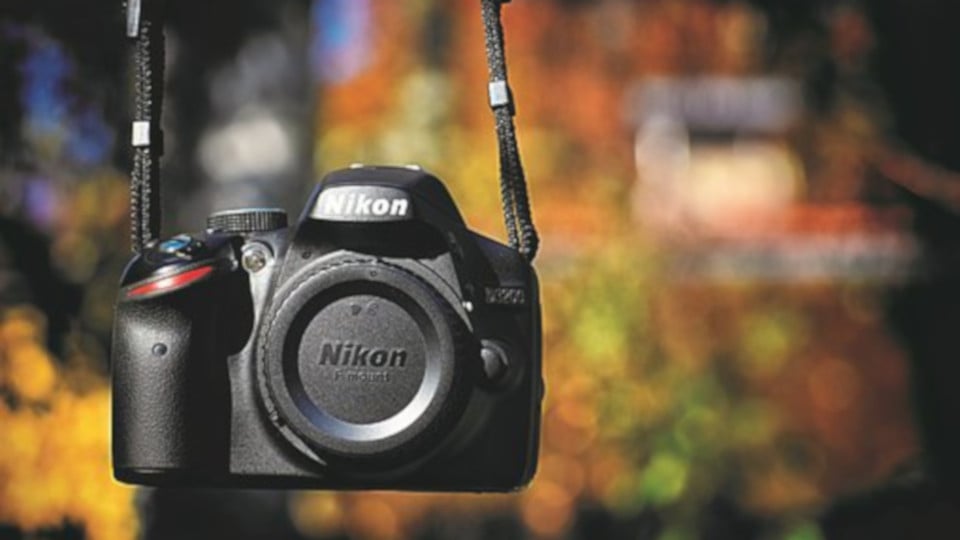
Almost all the well-known manufacturers offer suitable adapters, although an adapter that reproduces the image from the eyepiece is not available for every model, instead often a photo adapter replaces the eyepiece. This then offers only a fixed magnification, usually around the 800-1,000 mm focal length (e.g. Meopta, Optolyth).
Nikon offers an adapter with zoom function for its EDG spotting scope series (400-1400 mm focal length range on EDG 65 and 500-1750 mm focal length range on EDG 85 models). This is only suitable for Nikon cameras in principle but, when used with an adapter such as from Novoflex, can also be combined with cameras from other manufacturers. Kowa also has a zoom adapter, however this is only suitable for APS-C format cameras or those with a smaller sensor.
In the meantime, the trend is toward adapters that are put over the eyepiece. The big advantage of these adapters is that you don’t lose the variability of the zoom eyepiece, and you can quickly switch from observation to photography. However, with increased eyepiece zoom settings, the danger of vignetting increases.
Such adapters are available from Leica, Swarovski, Kowa for both the 660/600/SV-82 and the 880/770 series, Omegon and Nikon (especially for the 1 series of cameras). The Leica model is currently the only one with dioptre compensation. This can compensate up to +/- 4 dioptres. Swarovski offers models of their adapter that have been especially developed for MFT cameras and for cameras with a full-frame sensor.
For all adapters (except for the Nikon model) a so-called T2 ring is required to connect it to the camera's bayonet.
For stabilisation, we recommend the QPL scope support systems from Novoflex. These are available for straight- or angled-view spotting scopes.
For the camera, there are also a few other things to consider
The camera should still be able to provide useful results at ISO values between 800-1,600. These high ISO values are necessary to keep the exposure times as short as possible so that the subject is not blurred.
The camera should be able to be controlled remotely, preferably with an electronic cable release, radio trigger, or via near field communication (NFC) using a smartphone or tablet. As a last resort an infrared trigger could also be used, however it must always be held in the direction of the receiver on the camera, and sunlight can interfere with the emitted infrared light. With a self-timer, which actually every camera has, there is always the danger that the object moves or disappears, or that there is a residual shake from pressing the shutter release button.
System cameras that offer the option of using only one electronic shutter are best suited. This is because these models do not suffer from vibrations from mirror slap or the shutter curtain mechanism. The camera should definitely offer Live View with a zoom function, as the image must be focused manually, and these ensure that the focus can be better controlled.
The camera must allow manual exposure without a lens. Unfortunately, modern cameras’ automatic exposure measurement doesn’t usually work with a spotting scope, so this must be adjusted manually. Not every camera has the ability to measure exposure without a lens that communicates with the camera.
The Nikon 3000 and 5000 series are examples of such cameras, and are therefore unsuitable.
With the adapters that are placed over the eyepiece, the risk of vignetting increases with the size of the sensor. If possible, capture the images in RAW format, so that white balance errors or underexposure can be corrected as much as possible without data loss.
Use of compact cameras
As far as the spotting scope is concerned, the same rules apply as for the use with SLR or system cameras. But the choice of adapters for attaching a camera is growing. Proprietary models are usually very easy to use, since once the camera has been set correctly, the adapter can be tilted to the side to observe and then quickly tilted back into place to take a picture (e.g. from ZEISS, Kowa, Optolyth, Nikon). Some manufacturers also offer adapters that are put over the eyepiece. These are usually easier to use, but are generally only suitable for specific camera models (e.g. Leica for the current APO Televid models and their own-brand X1/X2/X-E or the new X (Type 113) cameras).
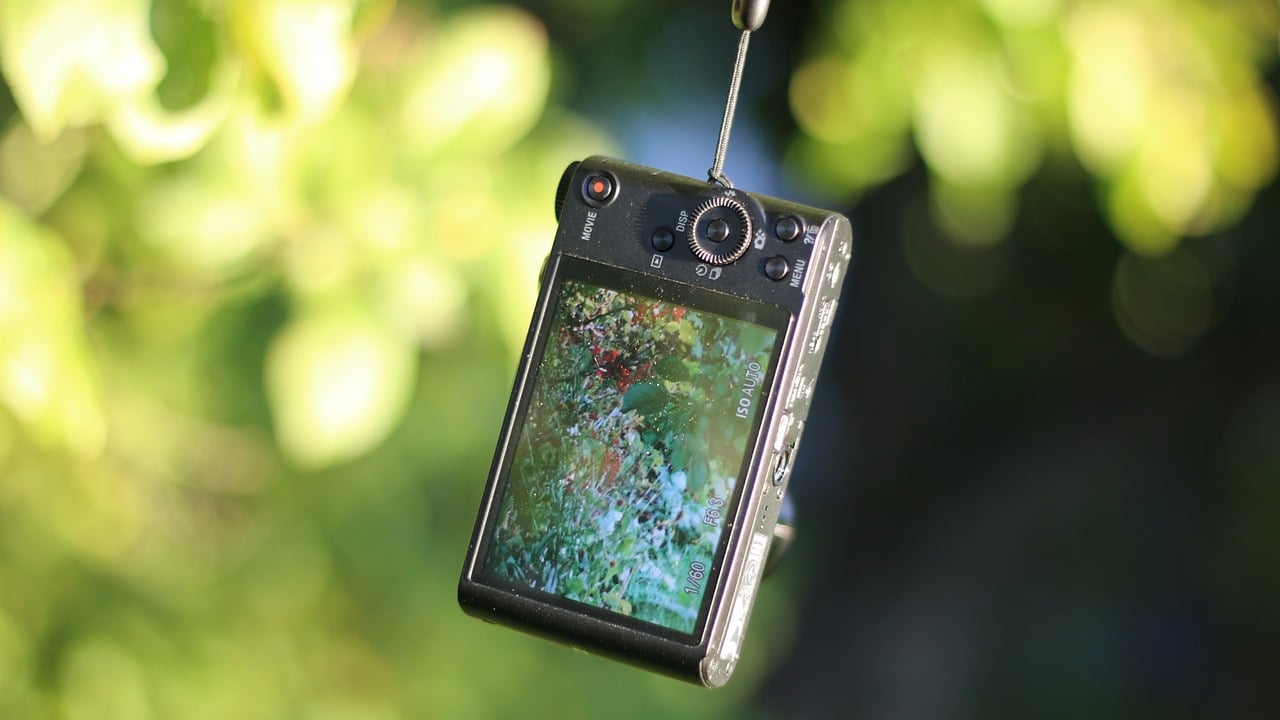
Some third-party manufacturers also offer adapters that can be attached to various eyepieces. However, they usually have to be removed from the eyepiece in order to adjust the zoom setting. And you have to make sure that the clamping device fits over the eyepiece of your chosen spotting scope.
Some of these adapters provide a connection for a classic cable release, but we do not recommend you use this, as it will cause camera shake.
There are also a number of things to consider when choosing a compact camera
Reasonably usable image results at high ISO values (image noise).
The zoom range of the lens should be between 3-4x, as otherwise there is a risk that the lens will hit the eyepiece (this often cannot be avoided by using the zoom less, since the lens anyway fully extends when the camera is switched on). The lens diameter should not be too large, otherwise vignetting will occur.
It is best if the camera has a connection for a cable shutter release (unfortunately only possible with a handful of camera models these days). However, more and more cameras offer the alternative of using near field communication (NFC) to operate the camera via a smartphone or tablet. The self-timer can also be used as a last resort. However, this should offer 2 seconds interval settings, since the usual 10 seconds are generally too long. Here, again, there is the risk of camera shake due to vibration from the shutter release.
The best way to adjust the camera's focus is to do it manually. Which setting is used is not important, since the focus is set on the spotting scope. If possible, capture the images in RAW format, so that white balance errors or underexposure can be corrected as much as possible without data loss.
Digiscoping with a smartphone
Some manufacturers meanwhile also offer adapters to connect smartphones to the eyepiece. These are mainly for the Apple iPhone 4/4s series (e.g. Kowa, Meopta), or Apple iPhone 5/5s (Kowa, Meopta, Swarovski). For iPhone 6 or iPhone 6s users, there are also tailor-made adapters from Swarovski or Kowa. Recently, adapters for the Samsung Galaxy S4 have also come onto the market, Kowa and Meopta are the pioneers here. ZEISS, in cooperation with ExoLens, also offers adapters for the Apple iPhone 6/6s and Samsung Galaxy S6/S6 Edge. With many of these tailor-made adapters, you still need a suitable adapter ring for your eyepiece or binoculars!
The companies Lens2scope, Focus or Carson offer adapters for a variety of eyepieces. You can find all smartphone holders here.
However, the image quality does not come close to that of modern compact, SLR or system cameras. But on the other hand, you always have your smartphone with you. Better a bad picture than no picture at all!
Does digiscoping also work with binoculars?
In principle, this works in just the same way as with the spotting scope, however there are, to date, only a few adaptation options here. Swarovski offers an adapter for the Apple iPhone 5/5s, iPhone 6 and iPhone 6s. These can be connected to almost all Swarovski binoculars and telescopes using a range of adapters. Meopta offers an adapter for the Apple iPhone 4/4s, Apple iPhone 5/5s and, more recently, also for the Samsung Galaxy S4. Kowa offers smartphone adapters for the Apple iPhone 4/4s, Apple iPhone 5/5s, iPhone 6 and the Samsung Galaxy S4 with interchangeable adapters for various eyepieces and binoculars from their range.
We would generally recommend that you mount the binoculars on a tripod. And because of the small aperture, the lighting conditions must already be very good. The focal length is not comparable to that of a spotting scope. If your binoculars do not have a tripod connection, we recommend the binoculars tripod support from Berlebach.
The choice of tripod
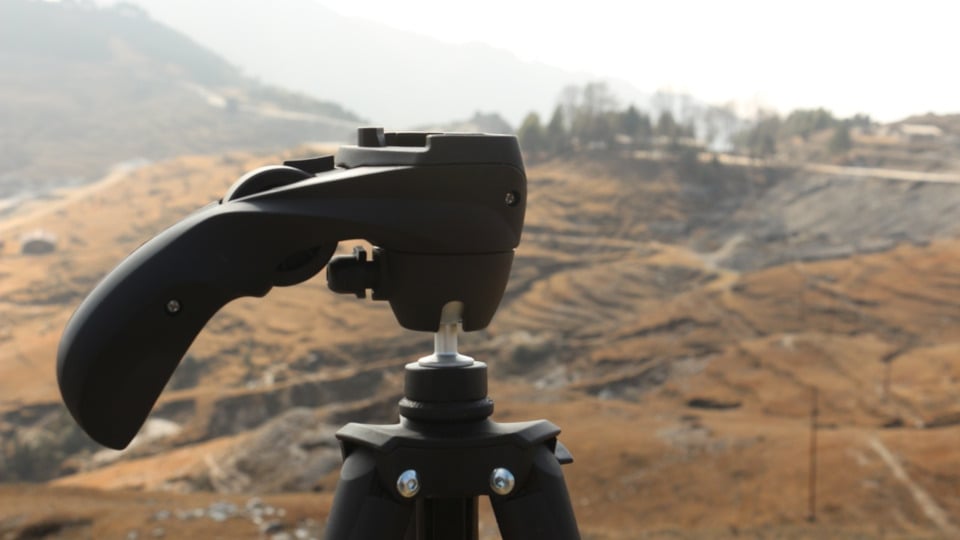
Next we focus on the tripod. Please don't just pay attention to the load capacity and the combined total weight. We are talking here about focal lengths from 500 mm to several metres (corresponding to 35-mm format). Accordingly, stability and vibration damping properties are the top priority. We recommend the use of tripods made of wood, or carbon if you feel that wood is too heavy for you. Aluminium tripods tend to suffer a lot from vibration, so if you prefer an aluminium tripod, always look out for one with the highest possible load-bearing capacity.
As a tripod head, we recommend so-called 2-way panheads (video tilt heads). These usually offer the option to balance the weight of the spotting scope by adjusting the quick release plate. If the selected tripod head does not offer this, or if the adjustment path is too short, some spotting scope or tripod manufacturers also offer a range of adjusting or mounting options which you can retrofit. For example, Swarovski, Kowa or Manfrotto. These 2-way or video tilt heads often also have spring-loading and friction control, which also ease adjustment and handling.
3-way tilting heads are of only limited suitability, as they do not offer these balancing options and the other adjustment aids. We would strongly advise against the use of ball heads, as the risk is too great that when the ball joint is unlocked, the spotting scope will tip to the side and it or the camera equipment will be damaged.
The bottom line
So you can see that there is a lot to consider if you want the best image results. We would be happy to help you with the selection of the right spotting scopes, eyepieces, photo adapters and tripods. Because camera models are constantly changing, we recommend that you consider the above criteria when selecting the right model. It is best to take this list of criteria to your trusted retailer and try out different camera models with your spotting scope combination.
I hope you have found this topic interesting, and perhaps we have aroused your curiosity to record your observations or to share them with your friends and family!
By the way: if you already have a powerful telephoto lens, there are also add-ons available to use it as a spotting scope.
Recommended digiscoping accessories
